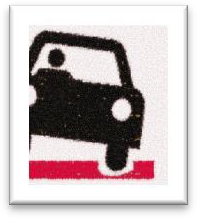Roads
Roads in Langham, apart from the A12, are unclassified. Private or yet to be adopted streets or roads, are the responsibility of Essex County Council highway authority. A description of the types of issues and treatments follows with a link to the Essex County Council highway authority website for reporting any observed issues.
Potholes
A pothole is a hole in the road that is deeper than 50mm and 100mm across in two directions at right angles to each other (perpendicular). They are usually formed during the winter months as a direct result of snow, ice and prolonged periods of rain and occur where an area of the road’s surface has broken up and fallen out.
Prioritising potholes
Essex County Council highway authority carry out regular inspections of the roads but also rely on the public reporting potholes to them. They inspect all reported potholes and risk assess them to prioritise their repair. They will either be classed as urgent or will be put into a planned programme of works to ensure they are repaired as efficiently as possible. The assessment will take into account many issues including the location of the pothole in the road and the type of vehicle that uses the road such as cars, motorbikes or pedal bikes.
Defect Assessment
Recorded defects are risk assessed during the inspection on a site specific basis. This allows other considerations that the inspector feels relevant to be factored into the risk assessment and is used to determine the level of response.
Programmed repairs
The vast majority of reported potholes are not assessed as urgent and are put into a programme of work. Following the risk assessment, the pothole will be categorised from Priority 1 (S1) to Priority 4 (S4). The timescale for the repair depends on the risk assessment and which type of road the pothole is on – County Routes (A, B and some C roads) and Local Roads (majority of C and unclassified roads).
Road Surface treatment
Over time, road surfaces become worn out due to the volume of traffic that use them and the different extremes of weather that affect them. Different surface treatments are used according to all the circumstances of the road, such as the current condition, how busy the road is and the most efficient treatment for the future, how many years of good condition will result from the money spent on the treatment.
Surface dressing
Surface Dressing is used where the surface is in reasonably good condition, but needs some quick, overall improvement which can last up to ten years. A large area can be covered very quickly at relatively low cost using this technique. Surface Dressing is used on most of County Highway’s surfacing programme.
Surface dressing takes place during the Spring and Summer months, although preparation works (patching etc) is carried out all year round. The treatment involved is sensitive to weather that is too cold, hot or wet, so sometimes the dates for this work can change at short notice.
Firstly any potholes or other defects are patched and the surface made level. Then the existing road surface is sprayed with a coating of hot bitumen and cover it is covered with stone chippings. The chippings are rolled into the bitumen to form a water-resistant protective layer which makes the road less slippery and extends its life.
As soon as the bitumen has set, the road is swept to remove any loose chippings but the nature of the treatment means there will be some loose chippings on the road surface until it beds down. 20mph speed limit temporary warning signs will be visible to alert drivers, as vehicles using the new surface help to embed the loose chippings.
Micro-surfacing
Micro-surfacing is a slightly more durable and more expensive process which places a thin layer of a complete new surface on the road. It takes longer to cover a given area than Surface Dressing, but is used where roads are busier and the road needs more levelling off.
Resurfacing
Resurfacing is where the existing surface is removed and completely new depth of surface is laid as a replacement. This treatment is used where the road is badly worn and needs to take perhaps heavy traffic and last a long time. It is expensive and slow.
Recycling
Recycling is only used in limited areas where the road is very badly out of shape. A very durable new surface can be laid, and logistics make it easier to re-use existing materials rather than bring in new stone. It is marginally more expensive treatment per area covered than resurfacing or other treatment.
Report or Track a Road Issue
To report a new issue, or track an existing issue, please click on the image below to visit the Essex Highways reporting portal:
